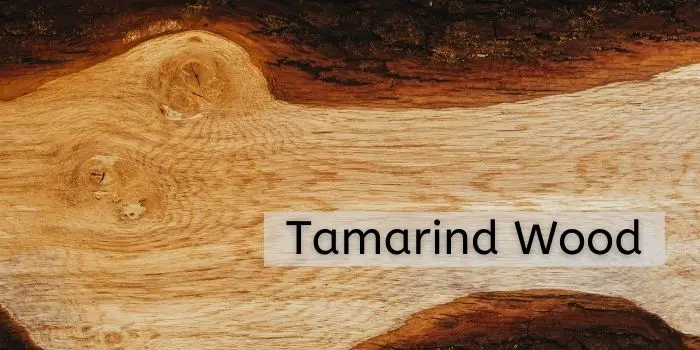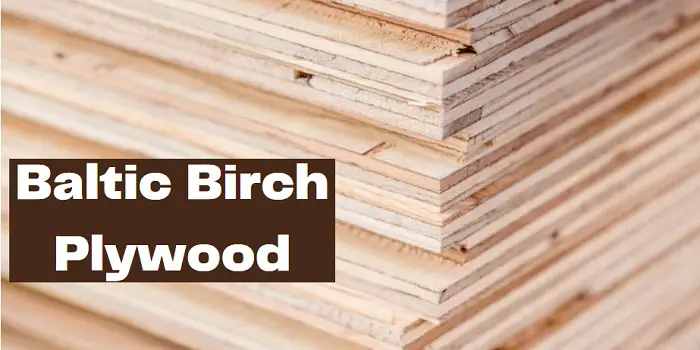
You’ll find Tamarind Wood in many different places around the world. But the species itself is native to the tropical portions of Africa.
A typical Tamarind will grow up to 80’ in height and has a trunk diameter that may reach up to 3’.
Sometimes called Spalted Tamarind, this is a common tree in the tropical sections of Africa and does have several uses.
Tamarind Wood
| Scientific Name: | Tamarindus indica |
| Tree Size: | 50-80 ft (15-24 m) tall 2-3 ft (.6-1 m) trunk diameter |
| Janka Hardness: | 2,690 lbf (11,970 N) |
| Type: | Hardwood |
| Odor: | No smell |
| Specific Gravity (Basic, 12% MC): | .68, .85 |
| Common Uses: | For turning objects, and small specialty wood items |
Appearance
Color
For the most part, the heartwood is a deep brown with a reddish hue. However, there will be some wood that offers a purple hue instead.
The heartwood tends to only be present in the older trees that have obtained a certain size. And even then, the heartwood is narrow in nature.
The sapwood is a pale yellow color and tends to be quite wide. You can easily tell the difference between heartwood and sapwood.
You may also find some discoloration in the sapwood as well. In the US, most of the Tamarind available features spalted sapwood.
Texture & Grains
Most of the texture tends to be quite uniform. The grain also tends to be interlocked and wavy in nature as well.
Tamarind is quite common in Africa and in many parts of the world. It does not appear on any endangered species list.
One big advantage of heartwood due to its interlocking grains and density which makes it quite durable. This means that it is quite resistant to insects and rot.
However, sapwood which tends to be more abundant is vulnerable to rot and insect invasions. This makes the sapwood non-durable in nature, and it tends to be spalted.
Tamarind Wood Workability
The interlocking grains combined with its density make the heartwood difficult to work with for most manual and powered tools.
This makes the heartwood more difficult for beginners in woodworking to properly shape. The blunting effect on cutting edges is pronounced, but it does glue, finish, and turn well.
The heartwood also takes to a high natural polish, so if you can overcome the issues associated with its density, you can get a polished, professional result.
There is no noticeable odor associated with Tamarind. Plus, it does not appear to be toxic or carry any serious allergic reactions, making it work better than many others.
However, there have been some reports of the wood being toxic, but so far such reports are few and far between and may be due to other factors.
What is Tamarind Wood Used for?
You can find Tamarind used to make turned objects, carvings, furniture, and small, specialty wood items. This is mostly an ornamental tree and is not often used to build objects.
That is because Tamarind is better known for the fruit that it produces. And because it produces a desirable fruit, it tends to not be used for building objects until the tree itself can no longer produce any fruit.
For imported wood, Tamarind can be rather expensive. This is due in large part to the tree not being able to produce wide, thick boards.
Even though the older trees can become quite wide in diameter, they tend to be hollow inside. Plus, you will mostly find sapwood available and not heartwood.

Hi, I am Mark Garner a professional carpenter, woodworker, and DIY painter. I live in the small city of Peoria, Arizona as a semi-retired woodworker. I have started this blog with a simple motive to help you with my wood experience in this sector. If you like to know more about what I love doing and how it all got started, you can check more about me here.




